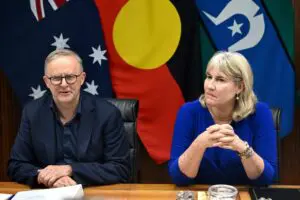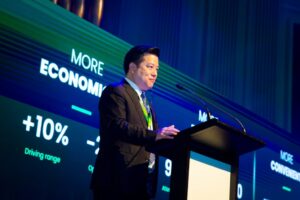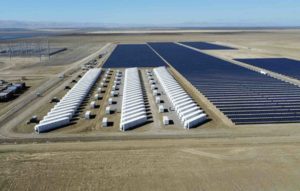Prime Minister Scott Morrison and his marketing team were in overdrive over the weekend, promoting a $1 billion energy deal with South Australia and gaining some obliging and in some cases craven headlines supporting his claim it was a boost for his gas-led recovery.
But a close look at the agreement – in fact, even a cursory glance – suggests it is anything but. In essence, Morrison and energy minister Angus Taylor have promised $660 million to secure gas that South Australia doesn’t need any more, precisely because that state is accelerating its transition away from gas to wind and solar and other storage technologies.
Not that you’d get a sense of that from Morrison and Taylor’s pronouncements.
The federal government’s press release hails the delivery of at least 50 petajoules of gas from South Australia for the eastern states gas market. This is almost exactly the amount of gas that South Australia says it won’t be burning in gas generation by 2023 under the scenarios mapped out by the Australian Energy Market Operator.
That document, which you can find here, shows the amount of gas generation falling significantly in coming years, firstly as a result of the new synchronous condensers being installed across the state grid, and secondly as the result of Project EnergyConnect, a major new transmission link to NSW.
The real story of this deal is its focus on new technologies – particularly hydrogen, various forms of energy storage, and electric vehicles. All will hasten the demise of fossil fuels.
Not that you’d get a sense of that from Morrison and Taylor’s pronouncements, or for the obliging media headlines, such as “Gas still key to SA energy mix in fed deal” in The West, and “Scott Morrison signs $1bn deal to shore up energy reliability in South Australia” in The Guardian.
The AFR also got it all wrong: “The Morrison government has signed a $1 billion energy deal with South Australia to help deliver more gas to help support the state’s renewable energy assets” its first paragraph read.
Um, no. South Australia, as the forecasts from AEMO, and echoed by the state government, is going to be using at least 50 per cent less gas in its electricity grid by 2023.
The assets that will be deployed to “increase dispatchability” are not going to be gas. The Morrison agreement includes $110 million that had already been committed to the Aurora solar tower power plant, but the failure of that project means that money will now be handed out to other solar thermal and storage technologies.
Another $400 million will go to various technologies including hydrogen, electric vehicles and carbon capture and storage. Green hydrogen and EVs will accelerate the shift from fossil fuels, and gas in particular, and CCS is unlikely to feature much in a state that is burning hardly any fossil fuels. CCS is not economic, and it’s not needed here and is only mentioned in dispatches to satisfy certain “stakeholders”.
The only really tangible gain is the commitment by the Morrison government to give $50 million to match the state government’s contribution to early works of Project EnergyConnect, a massive new $2.4 billion transmission link that will accelerate South Australia’s switch away from gas and the NSW switch away from coal.
This new link – still awaiting investor and regulatory approval after a big rise in costs – is considered crucial for South Australia’s efforts to unlock billions of dollars of wind and solar projects, treble the output from wind and solar in the state, and become a massive exporter of green energy through the transmission line and through green hydrogen projects.
In this way South Australia is leading the path for the rest of the Australian electricity grid – renewables will dominate, and gas may play an important role at various points in that transition, but it will not require more gas to be burned.
South Australia, for its part, is promising $422 million to new projects as part of the deal with Morrison, but most of it has already been announced, and none of it involves gas. This includes its three-pronged hydrogen strategy, and its plan to leap from “net 100 per cent renewables” by 2030 to maybe 200 per cent renewables by that time, on its way to 500 per cent renewables by 2050.
Other money is going to the Home Energy scheme, which focuses on the rollout of rooftop solar, battery storage, virtual power plants and demand response schemes, and new investments in electric vehicles.
South Australia is also keen to tap into a greater share of monies being allocated by the federal government’s Emissions Reduction Fund (so far it is getting barely more than 1 per cent), and it will put forward other projects for the federal government to fund, and then manage through ARENA, which under Taylor is being increasingly turned into a management tool for projects chosen by the government, rather than a purely independent investment fund.










